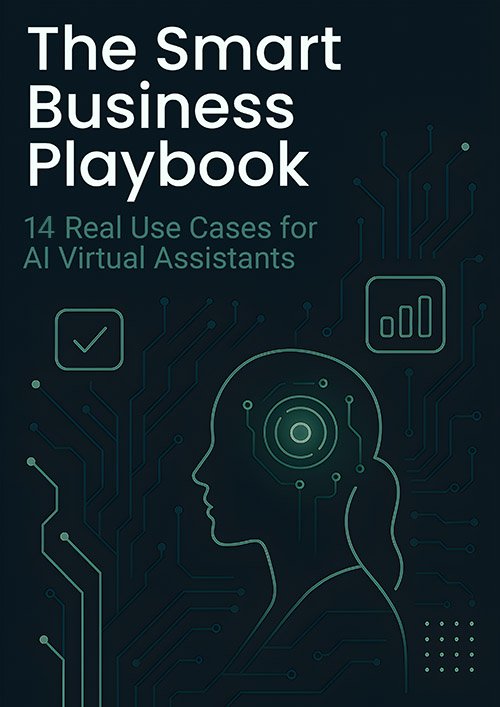Guarantee a seamless new hire process by streamlining pre-onboarding tasks with a week-ahead checklist, including essential documents and workspace setup. On the first day, offer a structured agenda and company overview for clarity. Implement role-specific training modules tailored to daily duties. Foster continuous learning for ongoing development and promote regular feedback. Emphasize DEI training to enhance inclusion and retention. Stay tuned for insights that elevate your new hire experience even further.
Key Takeaways
- Ensure role-specific training aligns with daily responsibilities and includes relevant tools and software.
- Incorporate assessments to evaluate understanding and adjust training as needed.
- Facilitate introductions with team members and key staff for relationship-building.
- Provide access to ongoing learning resources, such as video tutorials and online platforms.
- Emphasize DEI training to cultivate an inclusive and innovative workplace culture.
Streamline Pre-Onboarding Preparations

To streamline pre-onboarding preparations, start organizing at least a week before the new hire's start date.
Create a checklist to guarantee you gather all essential documents, such as offer letters, W-4, I-9, and the employee handbook. This facilitates a smooth onboarding process.
Prioritize workspace setup by arranging the new hires' technology, including email accounts and necessary software access, making sure they're fully equipped from day one.
Sending a welcome packet or introductory email about the company culture, mission, and values helps new hires feel connected.
Additionally, notify the team about the new hire's arrival to encourage team introductions and foster an inclusive environment.
These steps guarantee a seamless shift and effective onboarding experience for new employees.
Craft a Comprehensive First-Day Experience
After organizing pre-onboarding preparations, focus shifts to crafting a thorough first-day experience for the new hire.
Start by preparing a detailed agenda that includes 1:1 meetings, training sessions, and company demos to guarantee clarity and structure.
Conduct a company overview session to familiarize the new employee with your organization's history, mission, values, and structure, setting the stage for their integration.
Confirm all necessary equipment, such as laptops and access credentials, is ready and functioning to avoid delays.
Present the employee handbook, covering essential topics like workplace rules, benefits, and leave types to verify compliance.
Facilitate introductions to team members and key staff, creating a welcoming environment and encouraging relationship-building from the first day.
This approach guarantees effective onboarding.
Implement Role-Specific Training Modules

While it may be tempting to take a one-size-fits-all approach to training, implementing role-specific training modules is essential to equipping new hires with the skills and knowledge they need for their specific roles.
Tailor these modules to align with daily responsibilities, ensuring relevance and practicality. Engage managers and employees directly in the onboarding program to offer real-time performance expectations and maintain alignment with departmental goals.
- Provide Practical Training: Use tools and software pertinent to the role, like CRM systems or data analysis tools, to enhance understanding.
- Incorporate Assessments: Use quizzes to evaluate understanding, making necessary adjustments to the training modules.
- Offer Ongoing Support: Supply resources such as video tutorials to reinforce learning and help new hires adapt to the workplace culture.
Foster Continuous Learning and Development
Since continuous learning is a cornerstone of professional growth, fostering an environment that prioritizes ongoing development is essential for both employee engagement and organizational success.
Start by implementing regular training sessions for new hires, emphasizing ongoing skill development. This approach can boost engagement and retention by up to 34%.
Provide access to online learning platforms, allowing employees to explore courses that enhance job performance by 15%.
Encourage joining mentorship programs, as mentored employees often report higher satisfaction with career development.
Schedule regular feedback sessions to discuss goals, enhancing employee productivity by 25%.
Promote team-building activities and collaborative projects to strengthen team communication and effectiveness by 30%.
These strategies guarantee that continuous learning is embedded in your organization's culture.
Emphasize the Importance of DEI Training

Recognizing the vital role of DEI training in building an inclusive workplace, organizations should integrate these initiatives to cultivate a culture that values diversity and fosters innovation.
DEI training enhances employee engagement and satisfaction, directly impacting retention rates and overall workplace culture. Here's why it's essential:
- Financial and Innovative Benefits: Companies with strong DEI initiatives enjoy 2.3 times higher cash flow per employee and 1.7 times higher revenue from innovation.
- Unconscious Bias Reduction: Effective DEI programs can reduce unconscious bias in hiring practices by up to 77%, ensuring fairer employment decisions.
- Attracting Top Talent: Demonstrating commitment to inclusivity and corporate social responsibility is vital for attracting and retaining top talent, particularly among younger employees prioritizing these values.
Frequently Asked Questions
How Do You Structure a New Hire Training?
You structure a new hire training by selecting training methods that match learning styles, fostering employee engagement. Allocate resources efficiently, set training duration, assess skills, integrate culture, and implement feedback mechanisms to drive continuous improvement and monitor performance metrics.
What Would Be Proper Training for New Employees?
You should guarantee proper training covers employee orientation, skill development, understanding company culture, job responsibilities, and performance expectations. Introduce workplace policies, facilitate team integration, enhance communication skills, and establish feedback mechanisms using thorough training resources for compliance.
How to Create a Checklist for Training?
Creating a training checklist involves juxtaposing structured objectives with interactive activities. Define training objectives, allocate resources, and schedule sessions. Use training tools, role assignments, and evaluation criteria. Incorporate feedback mechanisms to refine the onboarding process effectively.
What Should Be on an Onboarding Checklist?
Your onboarding checklist should include training objectives, team introductions, compliance requirements, and technology setup. Highlight company culture and role expectations, allocate necessary resources, and implement feedback mechanisms to guarantee alignment with performance metrics throughout the onboarding process.
Conclusion
Think of your new hire training checklist as a compass guiding your organization toward success. By streamlining pre-onboarding preparations, crafting a thorough first-day experience, implementing role-specific training, fostering continuous learning, and emphasizing DEI training, you guarantee your team navigates effectively through their roles. This meticulous approach not only builds a solid foundation but also underscores your commitment to compliance and professional growth, setting the stage for a thriving and inclusive workplace culture.


